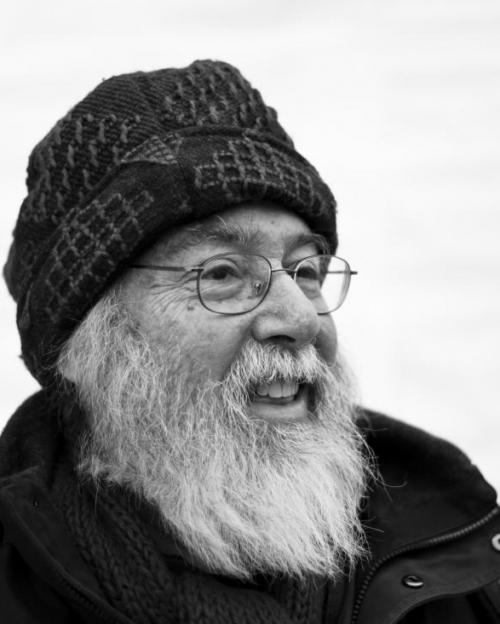Robert Strichartz, professor of mathematics in the College of Arts and Sciences, died Dec. 19 after a long illness. He was 78.
Remembered by colleagues as a creative thinker with diverse interests within mathematics and beyond, Strichartz made influential contributions to many subjects in the field and was known for his warm rapport with students, particularly undergraduates.
“Bob was an independent thinker with a broad knowledge of mathematical analysis,” said Laurent Pascal Saloff-Coste, the Abram R. Bullis Professor of Mathematics (A&S). “He liked to develop his own view of any subject of interest to him and explore it starting from basic principles.”
As a colleague and a teacher, Strichartz was both demanding and very supportive, Saloff-Coste said.
“He asked pointed questions and exposed flaws, if he saw one, in any argument,” he said. “But he always interpreted his interlocutors’ comments and explanations in the most generous and positive way.”
“Bob Strichartz was one of the classic names in the field of analysis, one of the core branches of mathematics,” said Camil Muscalu, professor of mathematics (A&S). “An extremely creative and visionary mind, he made profound contributions to many areas of study, including harmonic analysis, partial differential equations, analysis on lie groups and on manifolds, noncommutative harmonic analysis, wavelet theory and analysis on fractals.”
Strichartz’s most-cited paper, “Restrictions of Fourier Transforms to Quadratic Surfaces and Decay of Solutions of Wave Equations,” (1977) has been cited more than 600 times. Estimates introduced in the paper are now called “Strichartz estimates” in his honor, and MathSciNet , the database maintained by the American Mathematical Society, identifies 1,206 articles and books that reference them.
Strichartz made influential contributions to many mathematical subjects, said Tara Holm, professor of mathematics (A&S) and department chair. Later in his career, he developed an interest in the study of fractals as geometric and analytic objects.
“This became his research focus, and he had a tremendous influence on the development of the area through many deep formal and informal collaborations,” Holm said. “He also used it successfully for over 20 years as a training ground and introduction to mathematical research for undergraduate students who explored fractal objects under his supervision.”
The subject of fractals leant itself to intergenerational experimentation for Strichartz and undergraduate researchers, said professor Ravi Ramakrishna (A&S) and former math department chair.
“Bob didn’t grow up with programming,” Ramakrishna said. “He had a lot of insight and vision and the students could do the programming and numerical experimentation. Together, they would prove theorems.”
Strichartz was committed to introducing math research to undergraduate students, said doctoral student Shiping Cao, particularly through undergraduate summer research programs.
“Bob not only changed students’ lives but also published important original research with students about fractals,” Cao said.
With a course for math majors called “Totally Awesome Mathematics,” Strichartz extended his enthusiasm for teaching math and drawing students into the breadth of the discipline. He was also devoted to working with elementary- and middle-school students.
Strichartz’s textbooks “The Way of Analysis” and “Differential Equations on Fractals” are renowned for their friendly style that pulls in the reader and develops intuition as well as rigorous theory, Holm said.
Bob Strichartz was born in New York City in 1943. He attended Bronx High School of Science, then earned his B.A. from Dartmouth College in 1963 and his Ph.D. from Princeton University in 1966, where he worked with Elias Stein.
Strichartz was a NATO postdoctoral fellow at University of Paris Sud (Orsay) from 1966-1967, and then a C.L.E. Moore Instructor at the Massachusetts Institute of Technology from 1967 to 1969. He was appointed assistant professor of mathematics at Cornell in 1969, associate professor in 1971, and full professor in 1977. He mentored nine doctoral students and many undergraduate researchers.
He brought faculty and students together for weekly lunches, encouraging attendance by offering Cornell apples. An amateur composer, Strichartz was also the driving force behind a tradition of annual math department concerts, during which faculty, students, spouses and children would perform music at all levels.
“Bob was keen to nurture a friendly atmosphere in our department,” Holm said.
On nice days, during his office hours, Strichartz would take two chairs out into the A.D. White Garden and hold office hours under a tree, Ramakrishna said.
“He used to do ‘interviews’ in the garden for students who took his classes, which were really just a way for us to have a nice one-on-one chat,” former student Arnaldo Rodriguez-Gonzalez, a doctoral candidate in theoretical and applied mechanics, wrote on Twitter. “I remember being struck by how personable, fun, and down-to-earth he was. Professor Strichartz was a great mathematician, but more importantly, he was a good person.”
Bob Strichartz is survived by his wife Naomi, his son Jeremy, his daughter Miranda, two granddaughters, and a step-granddaughter.
Read the story in the Cornell Chronicle.




